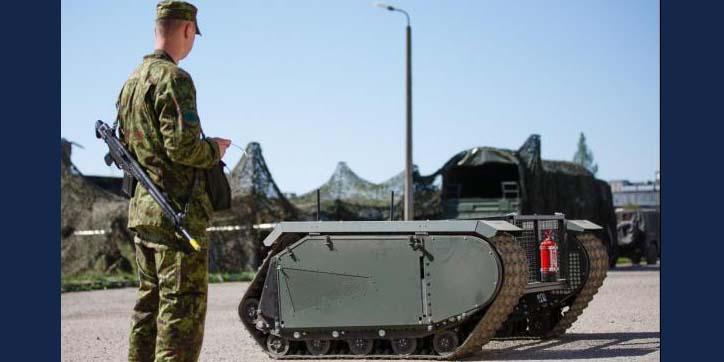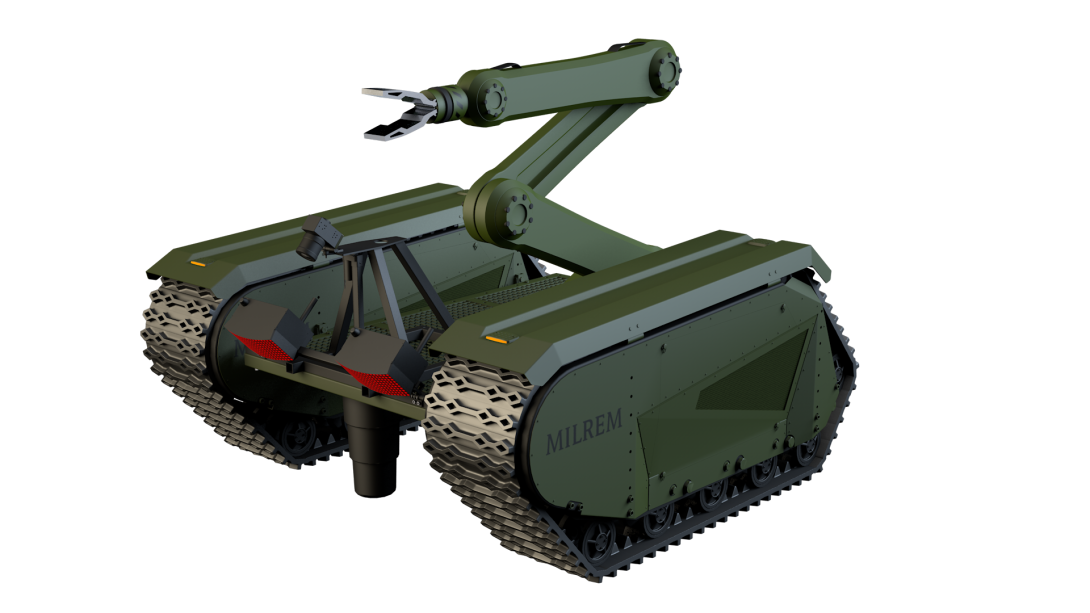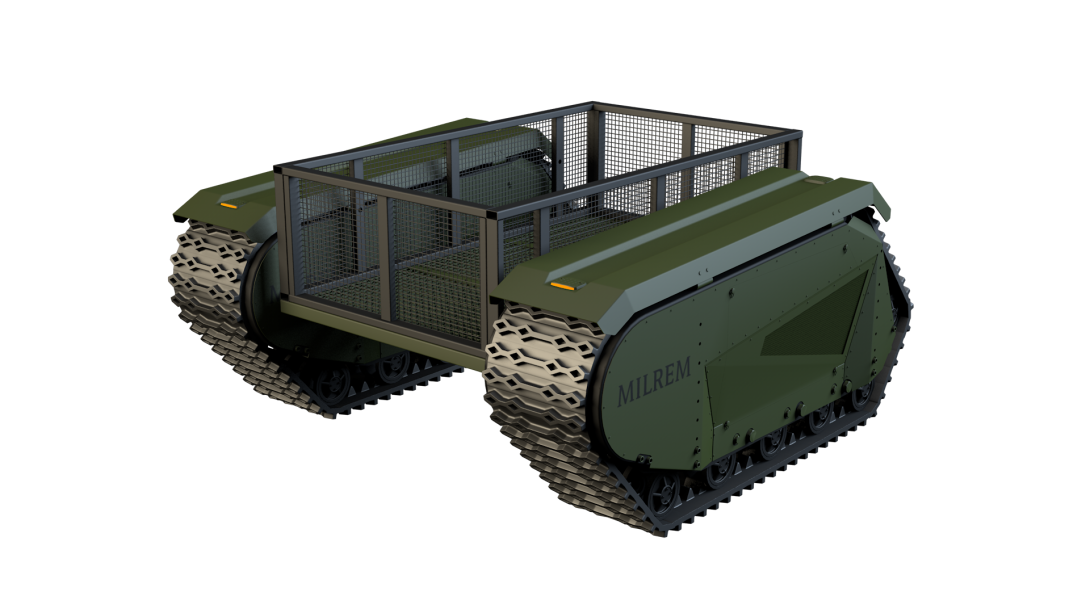Estonian UGV Prototype Could Aid Infantry Troops, Lighten Transport Load
Machine has not quite fully replaced man yet, but a new development in unmanned technology is coming close. An emerging system, successfully tested in Europe this spring, might help keep infantry troops safer while also lightening their transport load.
Machine has not quite fully replaced man yet, but a new development in unmanned technology is coming close. An emerging system successfully tested in Europe this spring might help keep infantry troops safer while also lightening their transport load.
The Tracked Hybrid Modular Infantry System, or THeMIS, developed by Estonia-based company Milrem, is an unmanned ground vehicle (UGV) that can be adapted to a number of battlefield missions, from logistical support to reconnaissance and surveillance, border patrol, medical evacuation and high-technology weapon systems.
“Previously developed unmanned vehicles only performed specific tasks,” says Kuldar Väärsi, Milrem’s CEO. “However, this ground vehicle, THeMIS, can be customized to carry out different operations, leveraging its unique modular design and robust components.”
Recently, the UGV successfully passed a first round of military tests at Kevadtorm (spring storm), a simulated battlefield event hosted by the Estonian Defense Forces Logistics Battalion.
“We predict that within the next five to 10 years, UGVs will take a very important place for military equipment … and will have [roles] for commercial products as well,” Väärsi says.
The initial prototype carries a payload of 2,200 pounds and can endure eight to 10 hours of continuous work time, he says. While it can travel about 15 mph, it was designed to move at speeds that mirror that of dismounted infantry soldiers.
“The main task for this kind of system is not to move with mechanized units, but to move on foot with infantry units,” Väärsi says.
Future models will be weaponized and will serve as a platform that can accommodate heavy machine guns, grenade launchers, rocket systems and antitank missile systems, he says. Milrem plans to conduct first evolutions of live-fire testing in Estonia this fall.
The tracked vehicles also can serve as surveillance systems, protecting base perimeters or monitoring a nation’s borders, he says.
"Sensor technology today is quite mature. If you add smart [artificial intelligence] capabilities, … it's possible to create very advanced and very good automated surveillance systems.”
During the Kevadtorm exercise, THeMIS was tested as remote controlled unit, but by the end of 2016, autonomous modes will be integrated.
The vehicles also could search for and counter roadside bombs, for example, or surveil uncharted territory—possibly even on track to replace the need for infantry troops.
"My prediction is, the future beyond 10 years, might be even more surprising than we can even imagine today,” Väärsi quipped. “That might happen.”








Comments